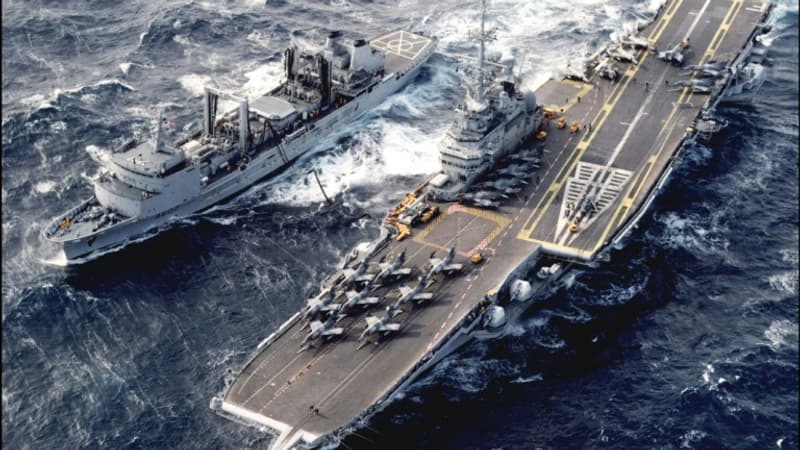The outcome was feared and criticized by several NGOs that pointed to an “environmental crime.” The Brazilian navy announced Friday that it had sunk the former aircraft carrier Foch in the Atlantic Ocean, full of asbestos, paint and other toxic debris.
“Toxic Package”
The “planned and controlled sinking occurred on Friday afternoon,” some 350 kilometers off the Brazilian coast, in an area “approximately 5,000 meters deep,” the Navy said in a statement.
Earlier in the week, he felt he had no choice given the badly degraded state of this 266-meter-long old hull, described as a “toxic 30,000-tonne package” by the Robin des Bois association.
“Given the risks involved in towing and due to the deterioration of the hull (…), the only solution is to abandon the hull by sinking it in a controlled manner,” the Navy explained in a joint statement on Wednesday. with the Brazilian Ministry of Defense.
“Severe environmental damage”
The Brazilian Federal Public Ministry (MPF), which tried to stop the operation by multiplying judicial resources, warned of the consequences, stressing this week that the aircraft carrier “currently contains 9.6 tons of asbestos, a potentially toxic and carcinogenic substance.” , as well as 644 tons of inks and other hazardous materials”.
There is a “risk of serious environmental damage (…) in particular because the hull is damaged,” the prosecutor argued.
The same story on the side of the environmental NGOs Greenpeace, Sea Shepherd and Basel Action Network, which denounced “a violation of three international treaties” on the environment. This sinking will cause “incalculable” damage, with “impacts on marine life and coastal communities,” they denounced in a joint statement.
Preventing this operation would be “probably” “unnecessary”, given “the imminence of a spontaneous sinking of the hull, which would not benefit the environment and would be likely to endanger the lives of the crew members involved in the towing”, for his part, he wrote the judge of the federal court of the state of Pernambuco (northeast), according to the G1 website.
The magistrate authorized the operation although he considered it a “tragic and unfortunate” solution, according to G1.
An area about 350 km from the Brazilian coast, with a depth of 5,000 meters, was considered “the safest” for this sinking, according to a press release from the Brazilian Ministry of Defense and Navy.
Acquired in 2000 by Brazil
This flagship of the French Navy, transferred to the Brazilian flag in 2000, has long wandered at sea in search of a port of refuge.
Built in the late 1950s at the Saint-Nazaire shipyard in western France, it served 37 years in the service of the French navy, before being bought in 2000 by Brazil, which renamed it Sao Paulo.
But due to its deterioration and a series of problems linked in particular to a fire in 2005, and when its modernization would have cost too much, Brasília decided to get rid of it.
Source: BFM TV


